Bitaxe: Open Source Bitcoin Mining
While Bitcoin industrial mining has partly fallen into the hands of a few publicly traded companies, home mining is experiencing a revival thanks to an open-source project called Bitaxe, created by @Skot9000. Let’s take a closer look at what it is, how it works, and how you can set one up.
What Is The Bitaxe?
The Bitaxe is the first fully open-source Bitcoin ASIC miner in nearly a decade, featuring both open hardware and firmware under the GNU GPL 3.0 license for the software, and CERN-OHL-S for the hardware.
It serves as a reference design that can be used as-is, scaled up, or adapted for specific Bitcoin mining applications. The project prioritizes affordability and accessibility of key components while maintaining competitive performance.
Comprehensive documentation is available, covering everything from manufacturing and firmware programming to community contributions.
| Description | Details |
|---|---|
| 🌐 Website | github.com/skot/bitaxe |
| 🏙️ Location | Open-source, global community |
| 📅 Year Founded | 2023 (Community-driven project) |
| 💻 Hardware Model | Bitaxe series (Bitaxe Gamma, Bitaxe Supra, etc.) |
| 🚀 Processing Power | Varies by model (typically 300-1200 GH/s) |
| 🔨 Mining Algorithm | SHA-256 |
| 📡 Connectivity | Wi-Fi (varies by model) |
| 🔒 Security Features | Open-source firmware, customizable settings |
| ⚙️ Compatibility | Compatible with Stratum V1 pools and Solo mining |
| 📈 Scalability | Stackable with multiple units |
| 💻 Power Consumption | Varies (typically ~10-15W) |
| 📏 Dimensions | Compact and lightweight, varies by model |
| 🌐 Volume | Small form factor |
| ⚖️ Weight | Lightweight (few hundred grams) |
| 📱 Mobile App | No official app, but accessible via web UI |
| 💬 Customer Support | Community-driven support via GitHub & Telegram |
| 🔄 Open Source | Yes (GPL-3.0 licensed firmware & hardware) |
| 💳 Price | DIY or assembled options, varies by vendor |
| 🌍 Shipping Availability | Depends on supplier |
| 📜 Warranty | Varies by manufacturer/seller |
| 📖 User Reviews | Community feedback on forums & GitHub |
How The Bitaxe Works
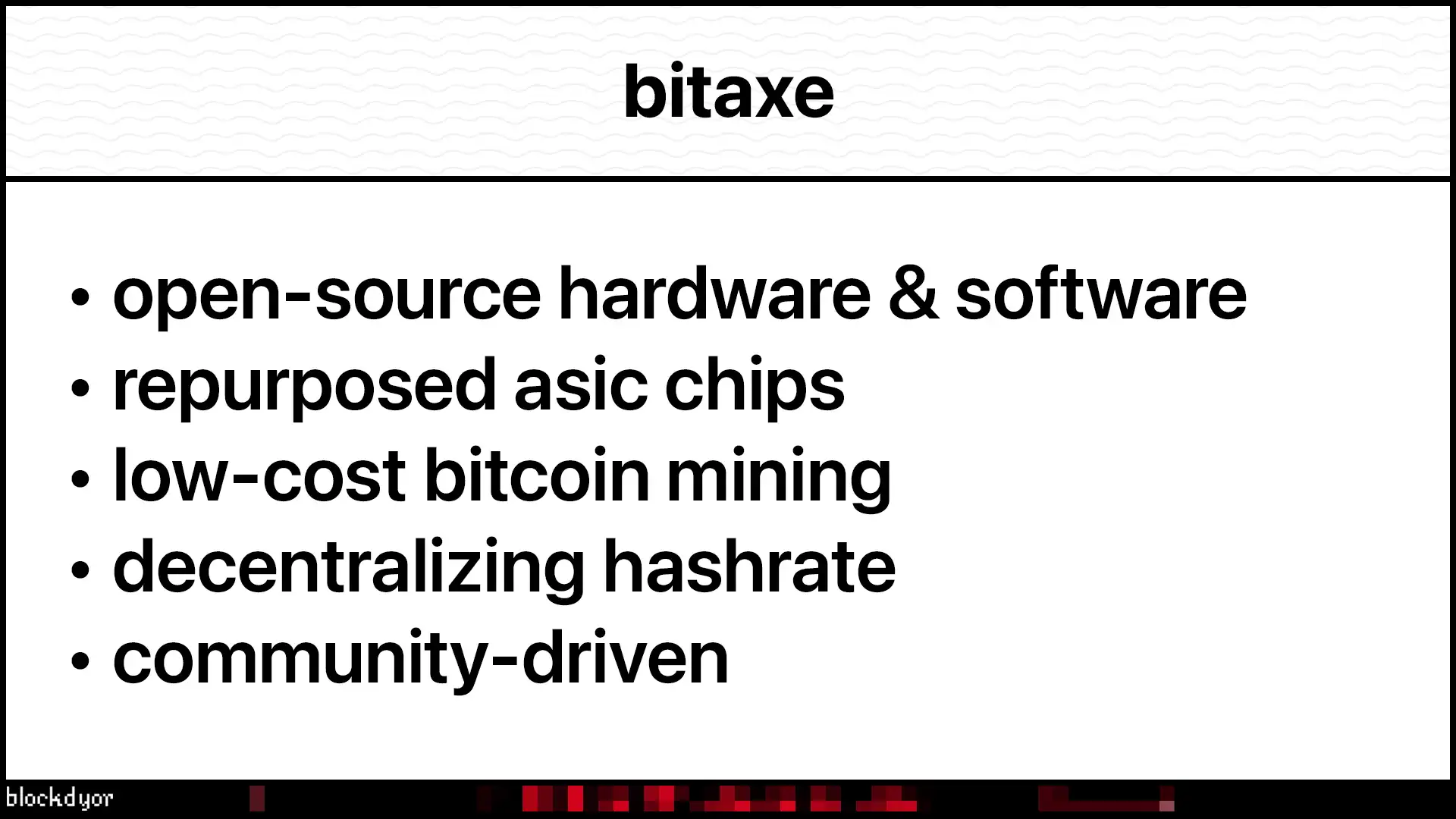
The Bitaxe is a compact, open-source Bitcoin mining device built around a single ASIC chip salvaged from Bitmain hardware. Unlike large-scale miners that use hundreds of chips in parallel, the Bitaxe keeps things simple, making it easy for individuals to participate in mining.
It runs on minimal power—about 10–15 watts, similar to a phone charger—allowing it to operate on a standard outlet without the need for industrial cooling. A small heatsink and fan provide sufficient cooling, keeping noise levels low.
On the software side, the Bitaxe uses fully open-source firmware, ensuring transparency and allowing users to modify or improve its functionality. It connects via Wi-Fi and features a small screen displaying real-time mining stats like hash rate and temperature.
Users can mine through a pool or choose to solo mine, directing their hashing power to their own Bitcoin node for greater decentralization.
👉 Click here to get the Bitkey. Use code BITKEYBLOCKDYOR at checkout for an exclusive 10% discount.
Who Created Bitaxe?
Bitaxe was founded in early 2023 by Skot, an electrical engineer and Bitcoin enthusiast who turned a personal hobby into a groundbreaking open-source project. Unlike traditional mining companies, Bitaxe isn’t a corporation—it’s a community-driven initiative with around a dozen regular contributors, all collaborating remotely.

Skot’s journey began with a curiosity about existing ASIC mining machines, particularly those made by Bitmain. He spent years deconstructing their hardware, studying their inner workings, and eventually reverse-engineering them. What started as a technical experiment quickly evolved into something much bigger: the blueprint for Bitaxe, the world’s first open-source ASIC-based Bitcoin miner.
His goal wasn’t just to create another mining rig. Bitaxe was designed to be fully transparent, accessible, and adaptable—offering anyone the ability to build, modify, and optimize their own miner without reliance on proprietary hardware or firmware. This approach resonated with the broader Bitcoin community, sparking widespread interest among miners, engineers, and developers eager to push decentralized mining forward.
With no corporate entity behind it, Bitaxe remains an open-source passion project. The community actively contributes to improvements, from firmware updates to new hardware iterations. Though Skot initially saw it as a fun challenge, his work has inspired a movement, proving that decentralized and DIY-friendly mining is not only possible but thriving.
Why It Matters?
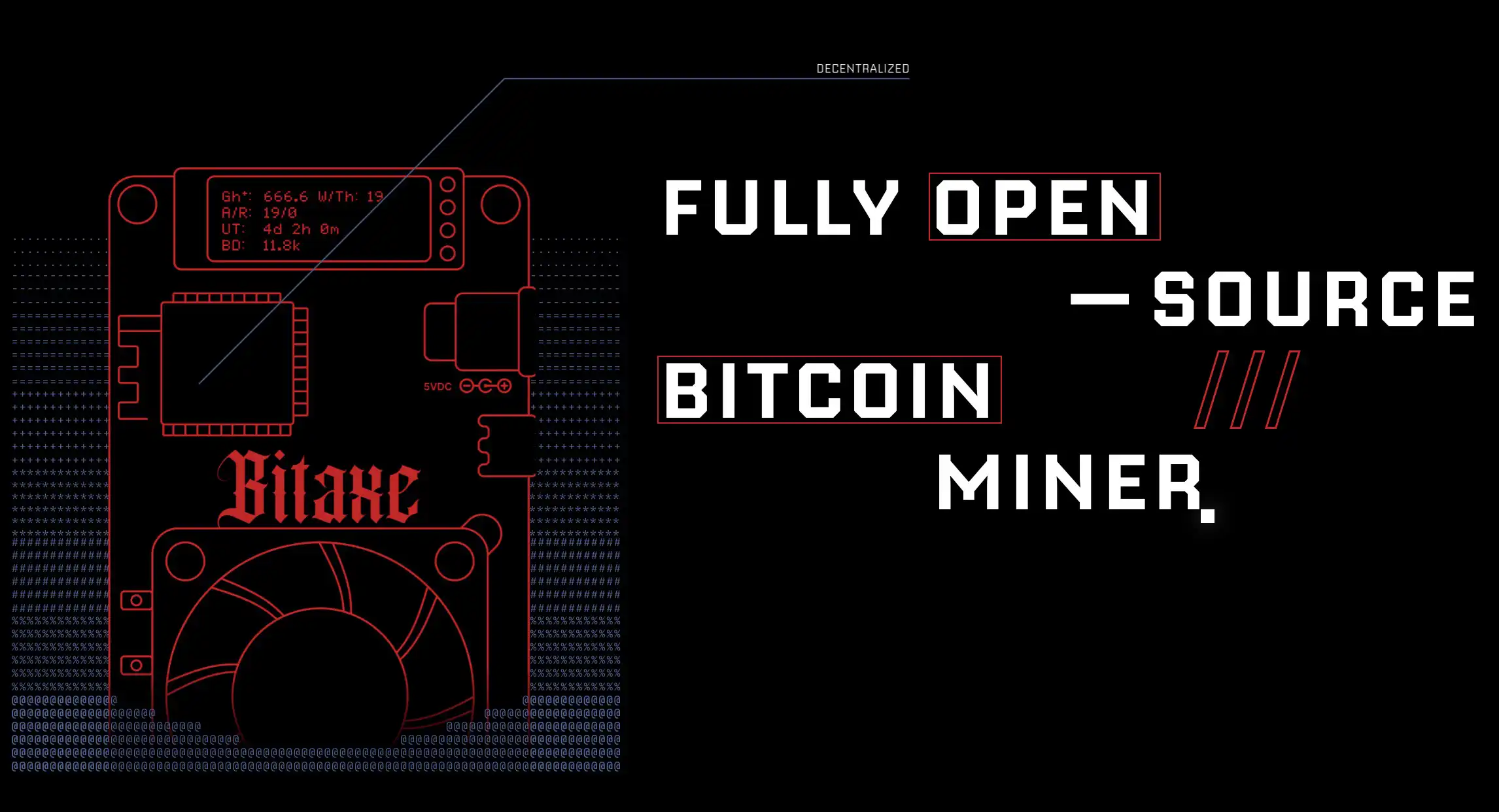
Bitcoin mining has become dominated by large, industrial-scale operations, making it difficult for individuals to participate. The Bitaxe project helps shift some of that power back to users by providing an affordable, low-energy option for home mining.
By enabling solo mining, it supports Bitcoin’s decentralization, ensuring that more people—not just massive mining farms—can contribute to network security.
Community and Development
The Bitaxe is a fully community-driven project. The Open Source Miners United (OSMU) Discord is the hub where developers and enthusiasts collaborate, working on firmware improvements, multi-chip designs, and alternative power solutions like solar integration.
Its low cost and open-source nature have made it popular among hobbyists, educators, and Bitcoiners looking for a way to engage with mining without large upfront investments.
Bitaxe Models
The Bitaxe project has introduced several models, each enhancing Bitcoin mining accessibility and efficiency. Here’s a look at the notable versions:
Bitaxe Max
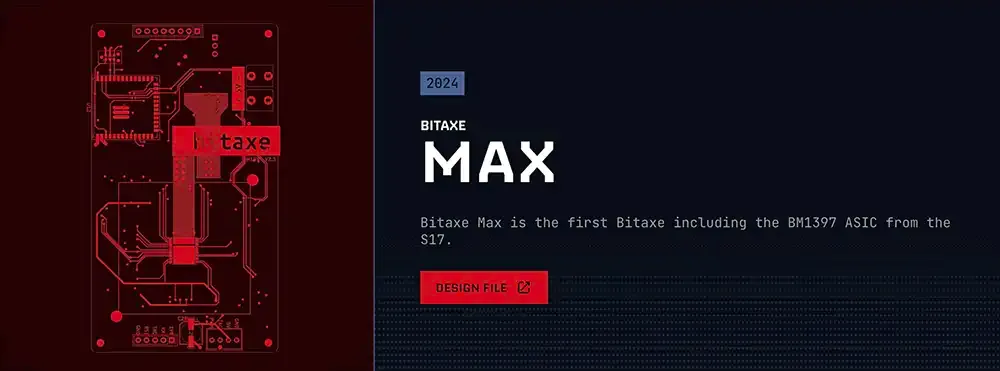
As the inaugural model, the Bitaxe Max integrates the BM1397 ASIC chip from the Antminer S17. This setup offers a solid foundation for those venturing into home-based Bitcoin mining.
Bitaxe Ultra
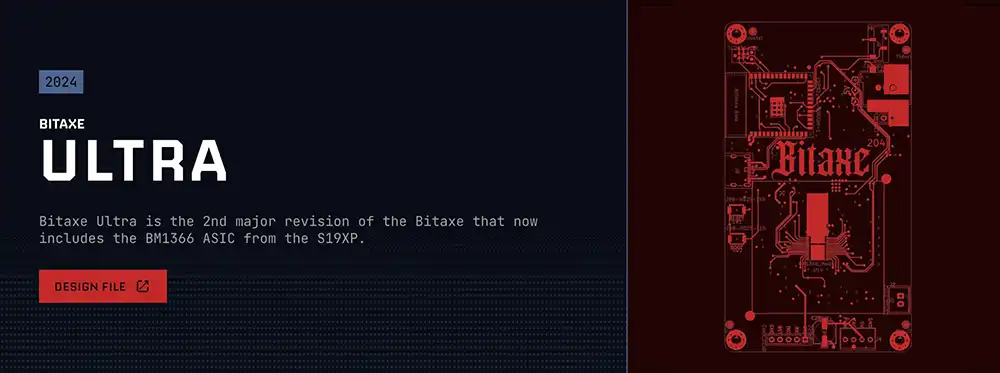
Building upon its predecessor, the Bitaxe Ultra incorporates the BM1366 ASIC chip from the S19XP series. This advancement provides improved performance and energy efficiency, catering to miners seeking a balance between power consumption and output.
Bitaxe Supra
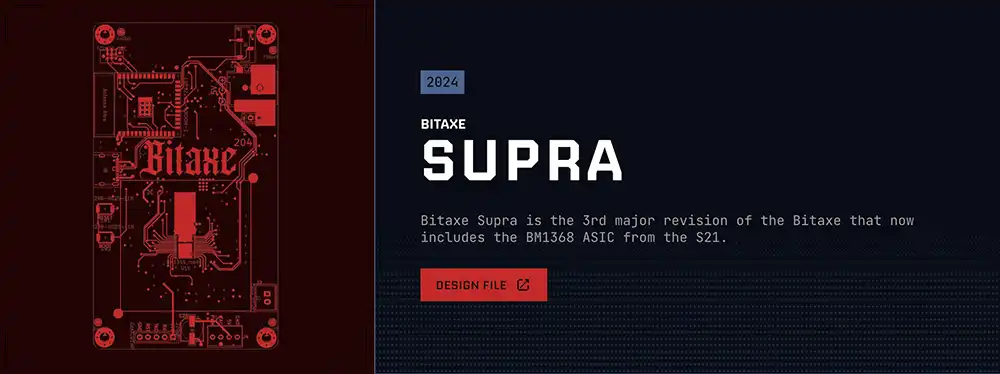
The third major iteration, the Bitaxe Supra, features the BM1368 ASIC chip from the S21 series. This model delivers enhanced hashing capabilities, appealing to users aiming for higher mining efficiency.
Bitaxe Gamma
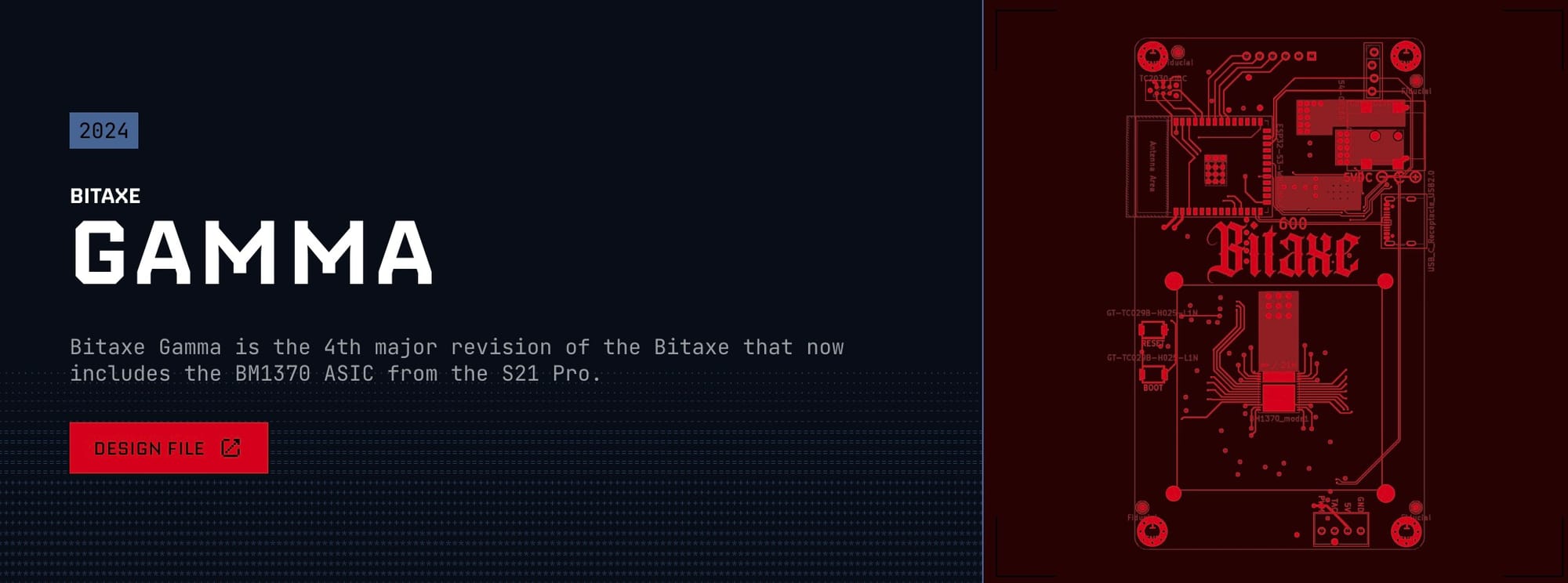
The latest in the lineup, the Bitaxe Gamma, utilizes the BM1370 ASIC chip from the S21 Pro. This version achieves approximately 1.3 TH/s at around 18 watts of power consumption. It boasts integrated Wi-Fi and a user-friendly web interface, simplifying the mining process for enthusiasts.
Multi-Chip Variants: UltraHex and SupraHex
Expanding on single-chip designs, the Bitaxe project has developed also multi-chip versions:
- Bitaxe UltraHex: Combines six BM1366 ASIC chips from the S19XP, aiming to boost hashing power while maintaining energy efficiency.
- Bitaxe SupraHex: Integrates six BM1368 ASIC chips from the S21, targeting users desiring substantial hashing capabilities for more intensive mining operations.
- Bitaxe GT: also known as the Gamma Turbo, is the latest advancement in home Bitcoin mining. Equipped with dual BM1370 ASIC chips, it delivers over 2 terahashes per second while consuming approximately 33 watts of power. This design emphasizes energy efficiency and user-friendly operation, making it an excellent choice for both newcomers and seasoned miners.
AxeOS
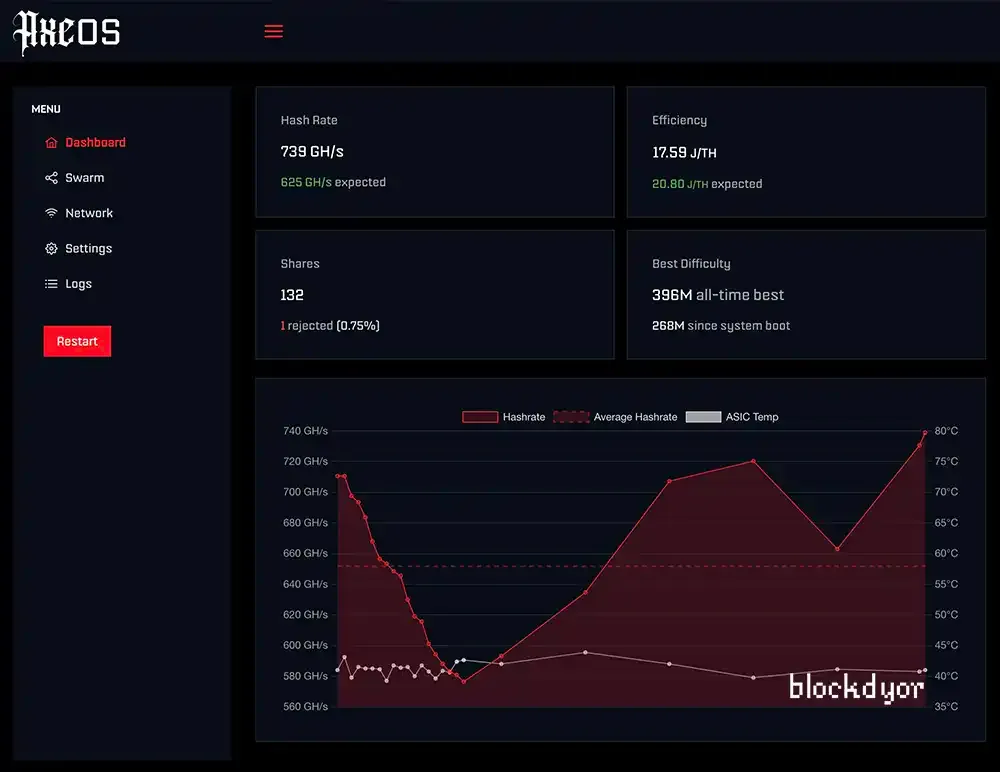
AxeOS (ESP-Miner) is the firmware that powers all Bitaxe models, providing a seamless and efficient mining experience. Built on open-source principles, it balances performance, ease of use, and customization, making it accessible for both beginners and experienced miners.
Key Features and User Experience
AxeOS offers real-time monitoring of hash rate, temperature, and power consumption, ensuring miners have full visibility into their operations. The interface is straightforward, allowing users to adjust settings without technical hurdles. Whether configuring network preferences or optimizing power efficiency, AxeOS makes customization simple.
Advanced Configurations for Power Users
For those looking to fine-tune their miners, AxeOS includes advanced settings for adjusting hash rate, power draw, and cooling strategies. Users can experiment with different configurations to maximize efficiency while keeping electricity costs low.
Optimization Tips
- Temperature Management: Keep the miner cool to maintain consistent performance. Proper airflow prevents overheating and potential slowdowns.
- Power Adjustments: Finding the right balance between hash rate and energy consumption helps improve long-term profitability.
- Firmware Updates: Regularly updating AxeOS ensures access to the latest improvements and security enhancements.
The Future of the Bitaxe
Development continues to push the project forward. Upcoming improvements include:
- Higher hash rate models with multi-chip designs for better efficiency.
- Stratum V2 support to give miners more control over block creation / transaction selection.
- Renewable energy integration, making it easier to mine using solar or heat-recapture systems.
- New chip brands, including the latest 3nm chip from Block..
The Bitaxe isn’t just another miner—it’s a tool for education, decentralization, and experimentation. Whether for learning, home mining, or innovative energy use, it puts mining back in the hands of individuals.
Bitaxe Pros & Cons
You can build a Bitaxe yourself by sourcing and assembling the parts, but it requires a high level of skill. The easier and faster option is to buy a pre-assembled unit from one of the available manufacturers.
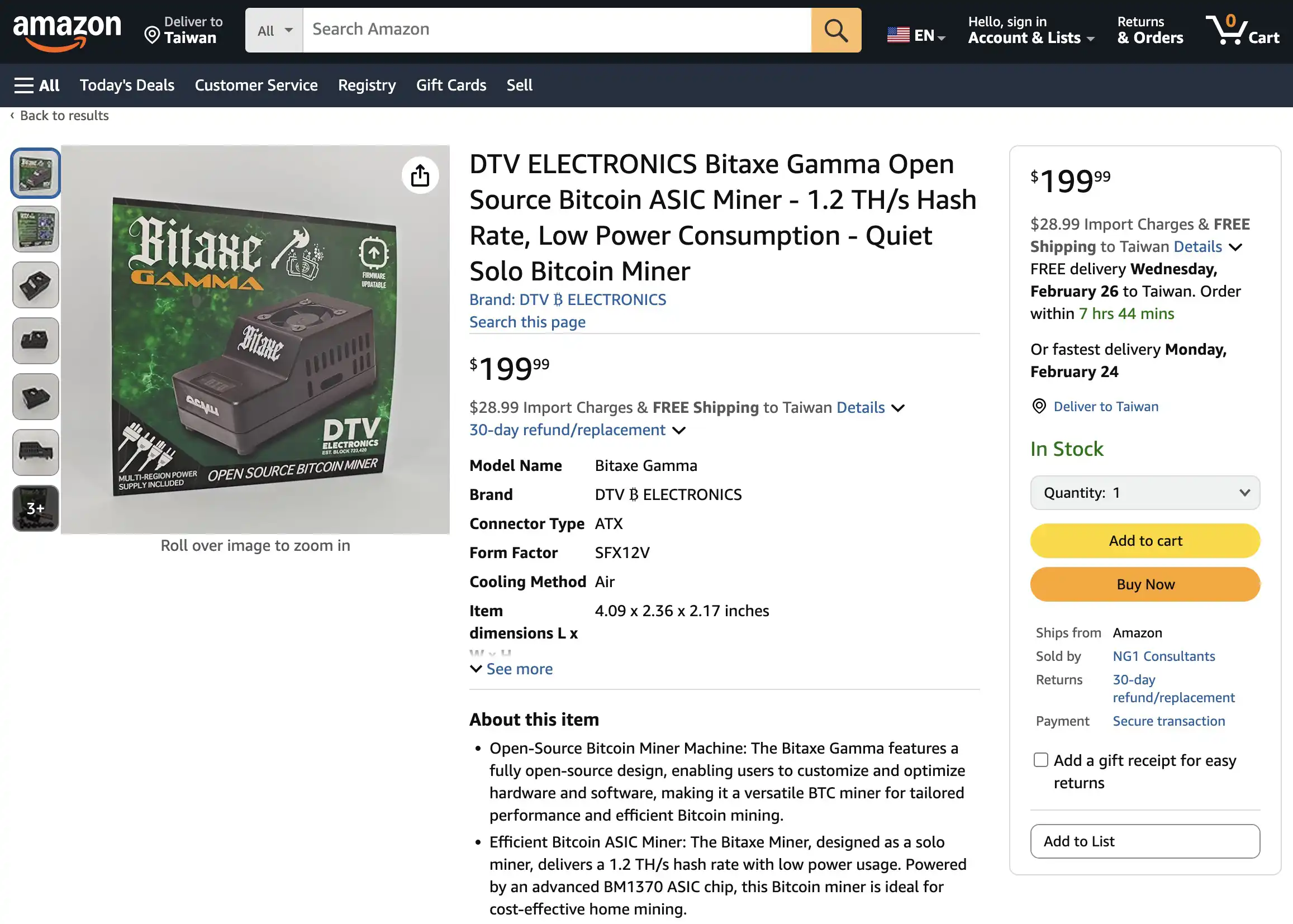
However, the cost per terahash isn’t exactly appealing, as the price per unit is relatively high. That said, this seems to be the only real drawback. On the other hand, the many advantages make this project incredibly compelling and a potential step toward reducing mining centralization.
| Pros | Cons |
|---|---|
| ✅ Low power consumption | ❌ High cost per terahash for assembled units |
| ✅ Quiet operation | ❌ Limited performance in large mining pools |
| ✅ High efficiency | ❌ Requires technical knowledge for DIY assembly |
| ✅ Open-source hardware and firmware | ❌ Availability of parts can be inconsistent |
| ✅ Great for solo mining | |
| ✅ Compact and easy to set up | |
| ✅ Helps decentralize Bitcoin mining |
Bottom Line
The Bitaxe project stands as a breakthrough in open-source Bitcoin mining, offering a fully transparent, flexible, and efficient alternative to traditional ASIC miners. By making both hardware and firmware freely available, it empowers individuals to take control of their mining operations without relying on large, centralized manufacturers.
While it may not compete with industrial-scale rigs in sheer power, its energy efficiency, quiet operation, and accessibility make it an appealing choice for home miners and enthusiasts. As mining continues to evolve, Bitaxe represents a step toward decentralization, proving that anyone can participate in securing the Bitcoin network on their own terms.


